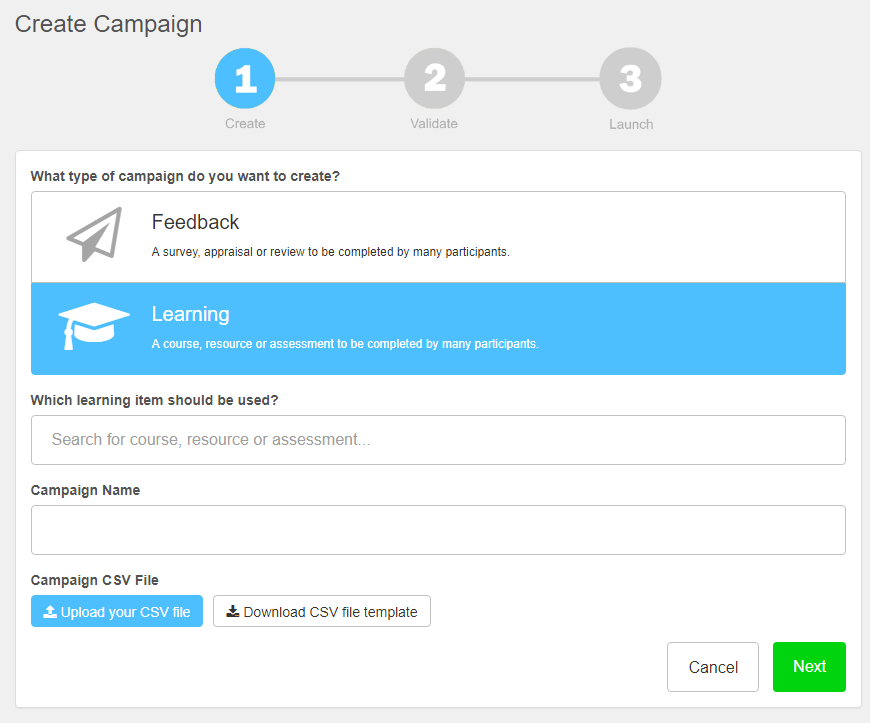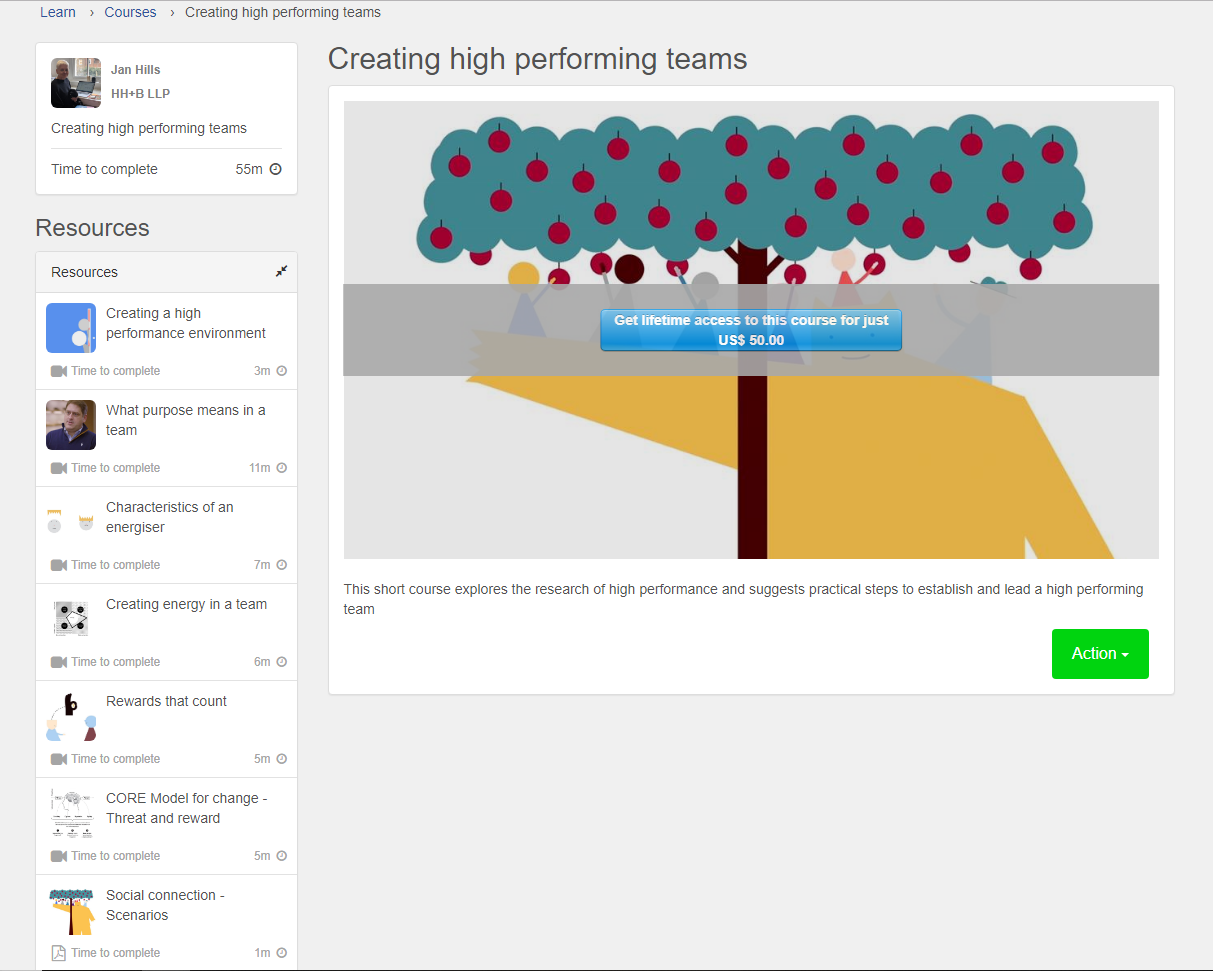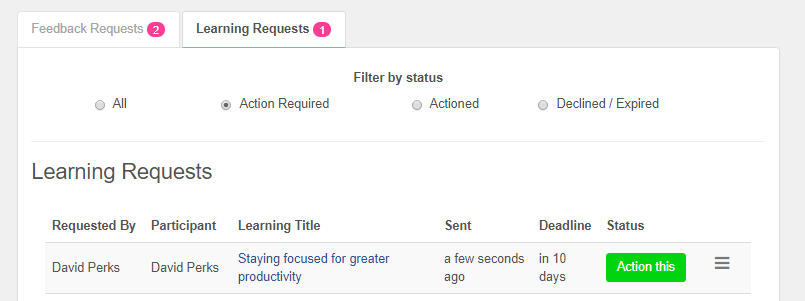 Using learning campaigns to increase the reach and effectiveness of micro-learning
Using learning campaigns to increase the reach and effectiveness of micro-learning
Micro-learning is in!
If you want to know why it's in, that's because of some fairly impressive benefits in comparison with traditional learning
1. Micro-learning is instantly available,
2. A worker can get an unfamiliar task done immediately by consuming micro-learning right there, right now,
3. It fits into busy schedules. Micro-learning can be done in normally redundant time like on the commute, or whilst waiting for a meeting to start,
4. Micro-learning is low cost to produce. Often user-driven content is used, produced by another practitioner, so it's credible too,
5. It's scalable. The number of micro-learning participants is unlimited, so rollout and completion by a large group can happen really really quickly.
What's not to love?
A few things actually...
The realities of micro-learning
Your Learning Experience Platform (LXP) is competing with YouTube
Firstly, less is more with micro-learning. The platforms offering tens of thousands of learning resources are less effective than those with tightly curated content. It's all to do with habits, and most workers have already formed a habit that when looking for generic learning the go-to place is YouTube. Platforms that offer a similar volume of general learning with an experience that's less good than YouTube are not attracting people in the workplace.
The ratio of organisation specific content versus generic content needs to be around 70:30 to earn the attention of workers, who with that ratio will look at the internal learning experience platform first, and eventually, that becomes the new habit.
This infers that it must be super easy to add user-generated content to get the ratio right, and workers need to be able to easily find it, and be guided to consume it.
If the learning content is on instant recall (from viewing history) why bother to remember it?
Next, another habit, or in this case mindset to overcome.
Remember that YouTube on how to fix the washing machine? Of course not. The next time you need to do that you'll watch it again, right?
This is how micro-learning can be perceived. Consumed in-the-moment, just for that moment and never retained.
Very little classroom learning is retained either, but let's not let that get in the way for now.
We do want workers to retain micro-learning. We definitely want proof of knowledge retention for micro-learning that's for compliance, or for their safety or for the safety of others.
So, is micro-learning the right mode of learning for these situations?
It depends, but if you're not using reinforcement techniques probably not.
It's tough to assimilate multiple micro-learning experiences to pursue mastery.
The 10,000 hours that it might take to reach mastery in an area of expertise is a heck of a lot of micro-learning time (a micro-learning resource averages 5 minutes).
Of course, it's not all going to be new learning. There's a lot of practice in there also, but to reach mastery a worker needs a succession of learning, application, feedback, and repetition.
To orchestrate this, individual micro-learning resources need to be grouped into courses or playlists that are consistent and cogent, not simply a stitched-together collection of resources from different sources in different formats with gaps and overlaps in the subject matter.
Few organisations are designing micro-learning to interlock into curriculums to develop mastery, and as a result, it's common that micro-learning is being used to tackle fairly basic atomic learning needs.
The recency of micro-learning as a paradigm, and relative lack of maturity in content design, means that the micro-learning format hasn't really been tested to its full potential for long-range and complex learning goals yet.
That doesn't mean it can't work, it simply means learning designers need to set out with that intent.
It's far from bad news though...
A little marketing psychology will help you to overcome these micro-learning downsides.
Driving eyeballs to your learning experience platform (LXP)
To persuade eyes away from YouTube and over to your content, we think the secret is to use learning campaigns.
A learning campaign is very much like an eMarketing campaign;
- it has an invitation (personalised to the recipient),
- a timeframe to inspire some urgency, and
- a simple call to action (in this case to launch some micro-learning with the click of a button).

Campaigns are sent to audiences or segments of the workforce. This may be a handful of people or hundreds of thousands of them.
In the case of a Pay Compliment learning campaign, once it's launched, the system will take care of tracking and reminders to nudge an invited participant to complete the learning by the deadline.
An effective level of automation allows Learning and Development leaders to forget about the administration of the learning campaign and to focus on the impact of the learning and the insights gleaned from delivering this digitally.
Each learner will need to reflect on what they've taken away from the micro-learning to mark it as complete, and these reflections are a gold mine of useful information.
Real-time reporting allows campaign effectiveness to be measured whilst the campaign is still in flight, so adjustments can be made based on such insights as they happen.
The simplicity of campaigns makes it possible to run A/B testing with your micro-learning to find out what approaches work best.
Memorability
Marketers are excellent at driving memorability.
You might not remember the YouTube video about mending the washing machine but you'll definitely remember the TV advertisements for your favourite brands, maybe even years later.
The TV advertisement format is really the forerunner to the micro-learning format, being a simple message in a very short time, as an interlude to another event (watching a TV show or Movie).
Marketers use repetition to create long-lasting memories. Learning and Development use spaced learning.
A set of learning outcomes might justify a series of connected campaigns; the initial learning, a knowledge test or quiz a few days later, a recap of key learning outcomes after several weeks, or even a feedback campaign to get 360 feedback for workers to measure how successfully they've been applying what they've learned.
Just knowing that there will be a test, or that there will be feedback on how you've applied what you've learned is enough to reposition the importance of internalising the micro-learning.
In addition to spaced learning, there are other ways to drive up the retention of micro-learning by working with knowledge of the forgetting curve and when to refresh the neural pathways of the learning.
Assimilation and efficacy
Marketers cross-sell and upsell by bundling products together. With micro-learning in Pay Compliment we can do the same.
Whilst every item of micro-learning is a resource, these can be combined into courses, and arranged into modules to produce a set of micro-learning around a single learning objective that needs to be explored in depth, or many linked learning objectives that need to be delivered in combination for a given business outcome.

Just as resources can be distributed via campaigns, so too can courses.
The campaign functionality will remind participants that they have outstanding learning to complete via reminder emails.
Counters against the request menu and learning request tab reinforce there are outstanding learning actions.

People have a natural tendency to want to clear these counters by completing necessary actions. In this case by completing the learning.
By bundling, and counting down remaining resources we are making it easier for workers to keep their attention on short bursts of micro-learning that accrue into an entire curriculum for capability development.
Summarising the marketing techniques to drive micro-learning effectiveness
1. Using campaigns drives large numbers of workers to the learning content rather than relying on self-discovery through search
2. Re-engagement with spaced learning techniques fights against the mindset that I can learn again just in time, rather than internalising the learning
3. Bundling micro-learning creates continuity across a set of related micro-learning resources
If you are exploring the use of micro-learning, contact us to find out how the Pay Compliment platform can be much more effective than other learning experience platforms (LXPs).